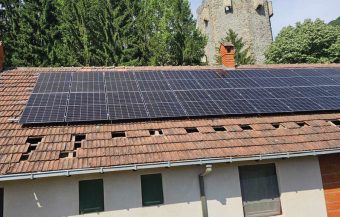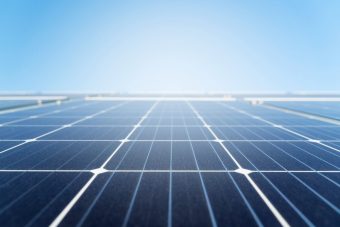
The energy transition leaves no one behind – everyone is encouraged to turn to clean energy sources and reduce their carbon footprint to achieve a greener future as quickly as possible. Religious institutions have recently recognized the importance of renewable energy and energy independence, and many monasteries in our country already have solar panels on their premises.
MT-KOMEX is always ready to take on new challenges when it comes to building solar power plants. After constructing a 50-kW plant at the Žiča Monastery, they recently completed another solar project at one of Serbia’s most significant monasteries – Manasija.
“This will mean a lot to the Manasija Monastery, especially in terms of material operations because we were paying huge electricity bills, and this power plant will significantly reduce those costs. It is also very important to take care of the environment for us as a nation to have a responsible attitude towards what God has created. I would advise everyone, anyone who has the means, to install solar panels, whether it is a monastery, a company, or a private home, especially in these times when we need more electricity,” said Father Pavle, the abbot of Manasija Monastery.
The solar power plant in question has a capacity of 12 kW and consists of 30 panels with an individual capacity of 410 Wp. These are monofacial panels from the renowned manufacturer Luxor Solar. MT-KOMEX always chooses the most efficient and modern types of panels on the market, and collaboration with Luxor Solar is always a sure choice.
IN FOCUS:
- Schneider Electric Empowers Building Owners and Operators to Achieve Net Zero Carbon Goals With EcoStruxure™ Energy Hub
- Eco Gym – Nurturing the Health of People and Nature
Filip Stojović, an engineer at MT-KOMEX, explains that the solar power plant at Manasija was built on the roof of a building next to the monastery to preserve the aesthetics of this Serbian shrine. He adds that the solar power plant is connected to a single metering group. However, this was not an easy task, as the monastery had several metering groups that had to be unified into one. As always, the MT-KOMEX team successfully overcame this obstacle, so the monastery now has a single measurement, and all the electricity produced by the solar power plant can be delivered according to the consumption needs of the monastery’s buildings. Stojović proudly notes that the installers built the power plant in three days, which is remarkably fast.
According to him, the plan is for the solar power plant at Manasija Monastery to gain prosumer status, as this procedure today is quite simplified and takes three to four steps to complete. The power plant is oriented southward, and the engineers designed it to maximize the use of solar energy. The estimated annual production of the solar power plant at Manasija is around 10,000 kWh per installed kWp, or 12,000 kWh annually. Thanks to this solar power plant, Manasija Monastery will contribute to an annual reduction of carbon dioxide emissions by 8,000 kg.

Regarding additional equipment, this power plant used a 10-kW inverter, which will enable obtaining prosumer status through a simplified procedure for power plants up to 10.8 kW. These inverters are from the Austrian manufacturer Fronius, with which MT-KOMEX has successfully realized 100 MW of power plants. MT-KOMEX decided to donate the solar power plant to this great Serbian shrine. The plant represents much more than a one-time donation because users will be able to produce green energy and reduce their costs over the next 30 years.
With this, the company has completed its portfolio of over 200 built solar power plants with a total installed capacity exceeding 120 MW. Alongside technical expertise, flexibility and adaptability ensure that the company’s team can meet various client demands and always deliver the most efficient power plant.
Prepared by Milena Maglovski
Read the whole story in the new issue the Energy portal Magazine AGROSOLAR ENERGY AND RES.


